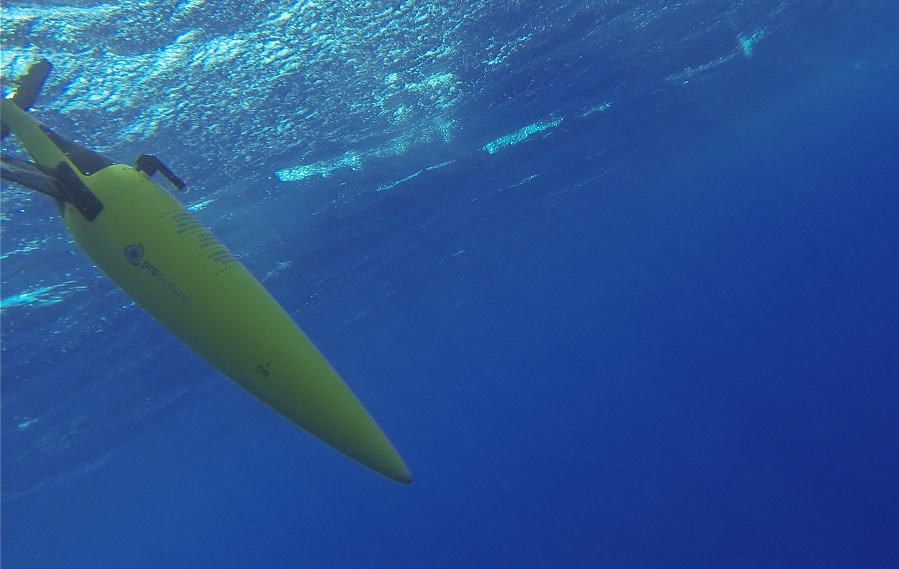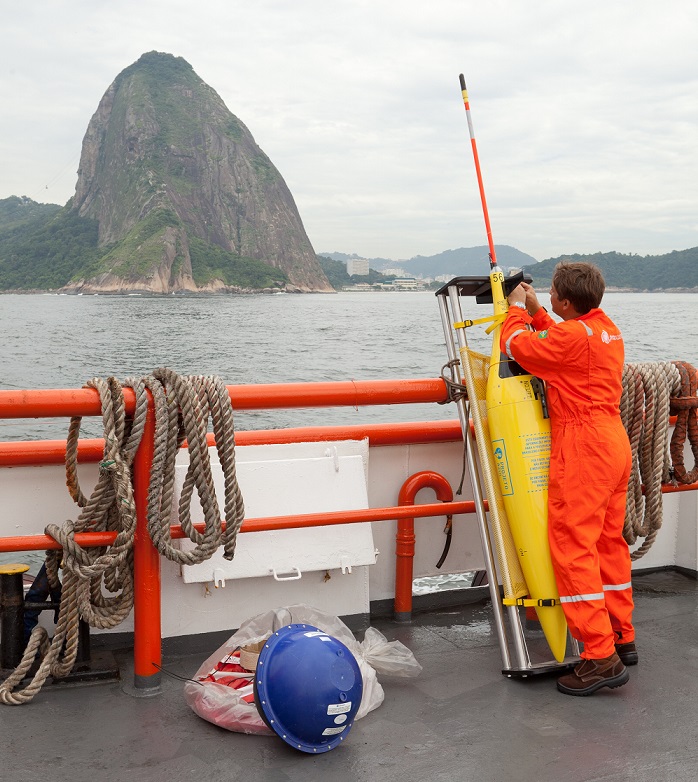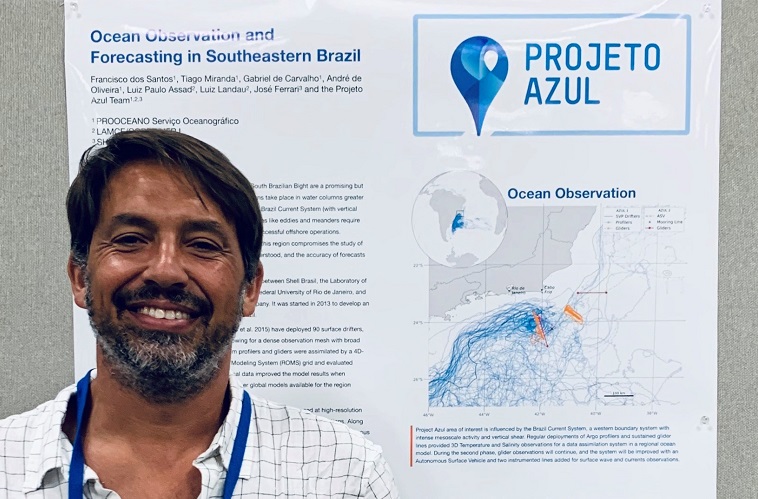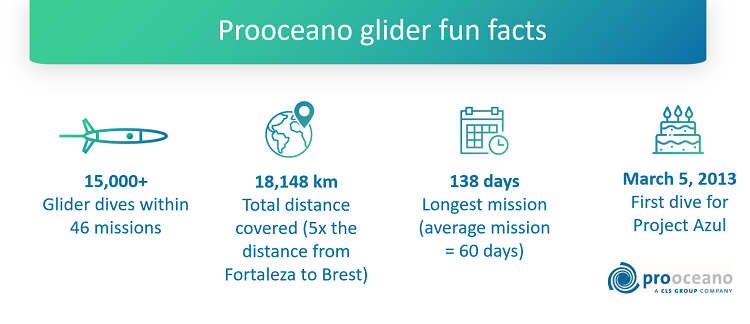On the importance of underwater gliders for ocean observations
- September 25, 2019
- Category: Flash info, Testimonies

Underwater vehicles and gliders are revolutionizing ocean observation and are becoming an increasingly important component of observing systems. In this testimony, Francisco Dos Santos of ProOceano, a CLS Group subsidiary, explains why.
At ProOceano, in Brazil, we have been piloting gliders since 2013. Gliders are essential tools that support our focus on offshore and coastal oceanography, water bodies and the environment, because gliders allow us to collect real-time data from the oceans with very low resources and risks, no matter how hard the weather.

We provide services in the areas of operational oceanography, data collection, numerical modeling, environmental risk analysis and ocean data analysis. Here are some of the reasons we started using gliders:
- Gliders are autonomous: That means you just need a few boat days to deploy and recover the gliders. They will remain long periods (3-4 months) unattended in the ocean.
- Gliders provide real-time data: Real-time changes everything because you can use the data provided by gliders to feed regional models to improve the forecast
- Gliders are piloted: The navigation capability allows us (to a certain extent) to choose where to collect the data (in opposition to lagrangian profilers that are drifted by the currents);
- Gliders can be tailor-fitted: You can fit different sensors in the gliders according to your objectives.
Some advantages of gliders
- Using gliders has enabled us to reduce the number of boat days compared to the amount of data collected;
- We have set a data assimilation scheme for Southeastern Brazil and we have shown that the collected data improved our forecasts (link to paper);
- Using gliders made it possible to keep a straight line crossing the Brazil current for a long period of time;
- We were able to tailor-fit our gliders with acoustic equipment and have performed an extensive passive acoustic monitoring with our gliders
CLS glider telemetry services
At Prooceano we use CLS Iridium RUDICS services to send data from our gliders. Iridium RUDICS is the only telemetry option to send the large quantities of data we collect in real-time. CLS provides us a reliable data back-up and archiving service, allowing us to focus on our core business of data analysis and forecasting.
In addition, we use Argos as a back-up telemetry solution, in case one of our gliders gets lost at sea, and we have a goniometer on hand.
 About Francisco Dos Santos
About Francisco Dos Santos
Francisco Dos Santos attended the 2014 Glider School at PLOCAN. Today he’s the Technical Director of Prooceano and coordinator of Projeto Azul, a sustained ocean observation program in Southeastern Brazil.
![]()

